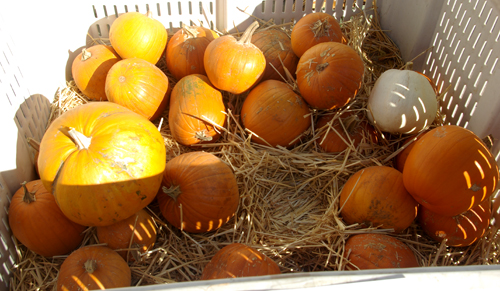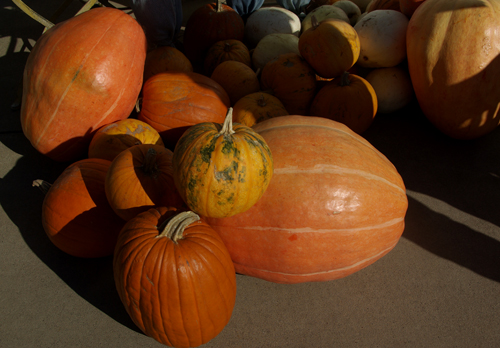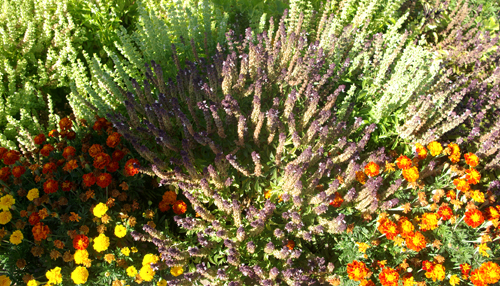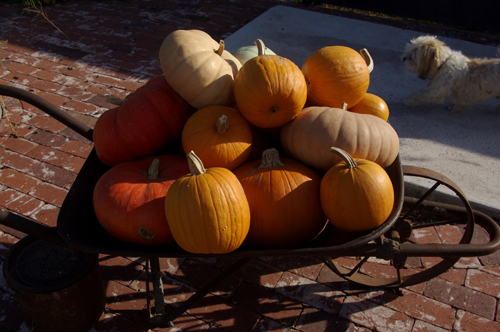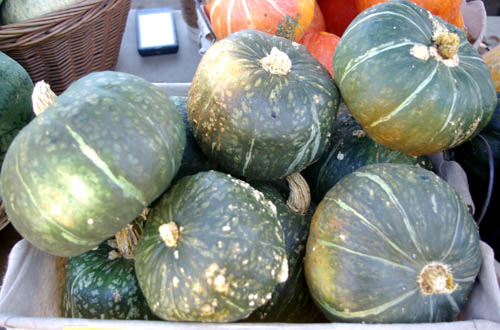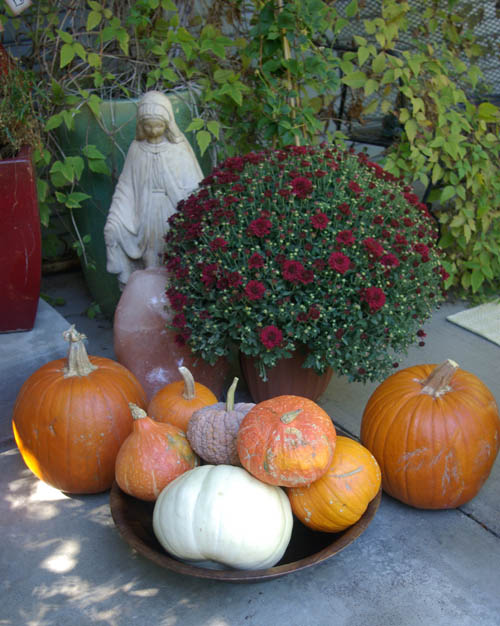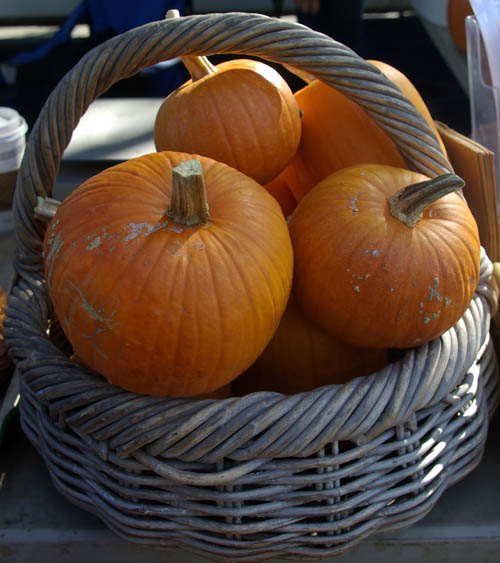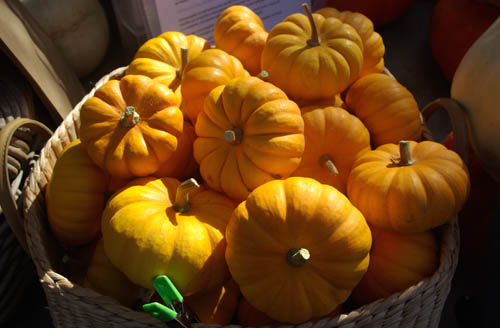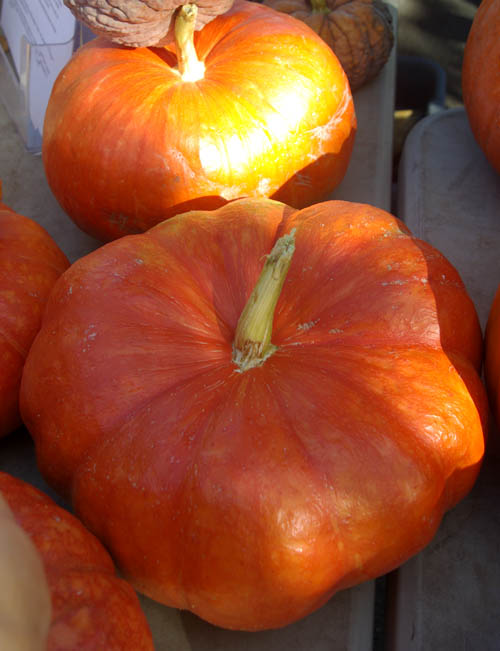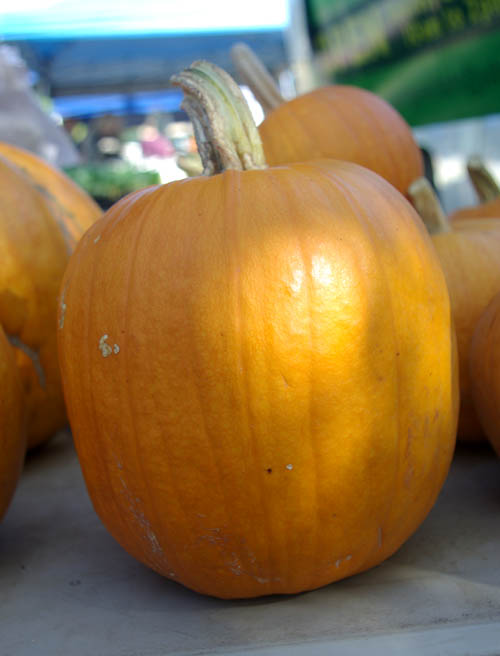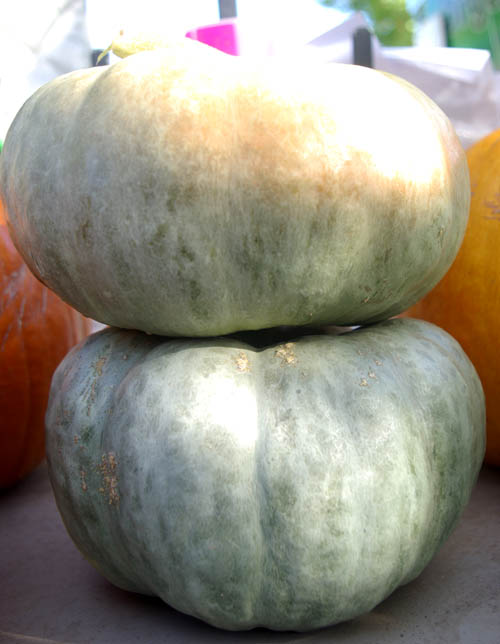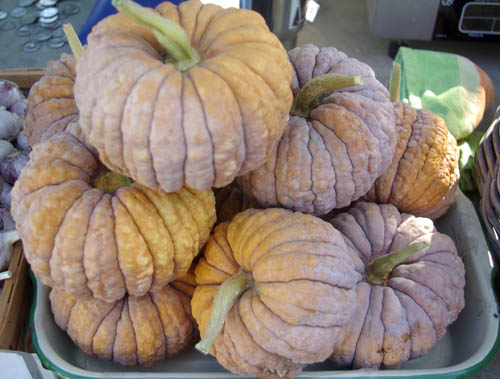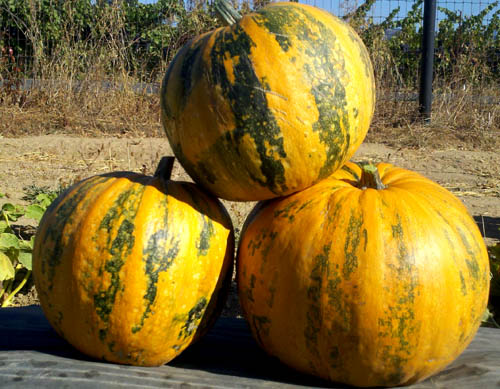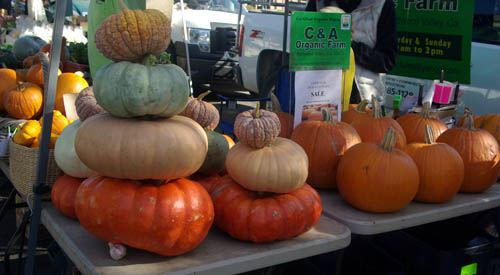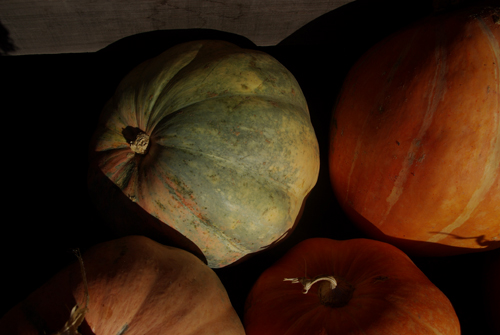
pumpkin beauty
I have to admit I was intrigued when my new pumpkin mentor, Anne, of C & A Organic Farm, posted to her Facebook page that she would be having an Ugly Pumpkin Sale this Sunday afternoon. Really? What might that entail? I asked. What it entailed was the marvelous opportunity to purchase very inexpensively those pumpkins the public had not deemed “perfect” due to mostly irregular shapes. Given that most pumpkin purchases at this time of year are due to jack ‘o lanterns for children I suppose I can understand. Since one of my goals is to have a supply of pumpkin puree on hand in my freezer this winter for breads and soups and as a rich diet supplement for my Border Collies, who love it, this seemed like a good deal to me, especially after Anne informed me the majority would be sold for a dollar apiece! Organic pumpkins for a dollar? I’m there!
Truth be told I’d been really wanting an opportunity to see Anne’s farm, imagining pumpkins scattered across a large field. Pulling onto her ten-acre property, propitiously set amidst several organic wineries, what greeted me were flat dry fields perfectly cleared, ready for impending rains, amendments and winter crops. Continuing on to her beautiful home, the last of the pumpkin harvest lay waiting for those adventurous enough to come and fetch them. Many were stored in this large plastic tub.
Others stood on display nearby. They all looked just fine to me!
Anne relayed that a Hispanic woman had arrived and salvaged a very large pumpkin for two dollars. She told Anne she would have her husband saw it for her. She would steam it. And planned to prepare pumpkin tamales. She wagered the single pumpkin would yield enough pumpkin to make $200 worth of tamales. I loved that Anne was making this opportunity available to someone ambitious enough to really take advantage of her Ugly Pumpkin Sale. It seemed a loving way to give back to a community that had embraced her abundant harvest for the weeks she had taken her wares to the various farmer’s markets around the county. A lovely way to do business; one that will undoubtedly endear her even more to the community, and add to her successes.
This was the first time I’d seen Anne outside a farmer’s market when she was busy selling her beautiful organic vegetables. Seeing her on-site afforded me the opportunity to learn more about her practices. She and her husband have very high standards for their organic produce, and their gardens and greenhouses all meet the standards required by the state of California to be certified organic. As we chatted she invited me to the back of their property where visual delights were in abundance! This is where, Anne explained, she tries out new possible products. She rather test drives various seeds so she knows what she will invest her own time in and can then recommend firsthand to her customer base. That is an awesome practice! It is also where she grows an abundance of zinnias and marigolds!
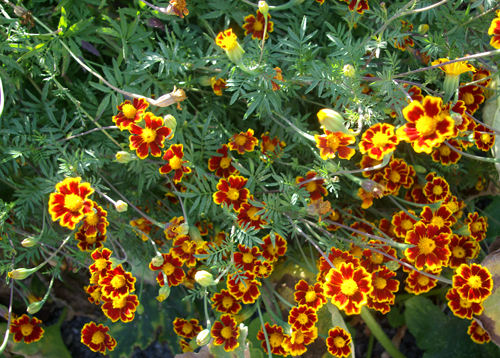
To know a plant you must grow it. ~Kathryn Hall
Notice the wonderful little cabin Anne’s husband built for one of their sons that he used to hang out in with his boyhood friends? What a great dad! How fun must that have been for a teenager??
Accompanying us was Anne’s faithful companion, Russell, who apparently is known on Facebook as “the supervisor”! 🙂 I hear he has his own fans. You can see why.
These are the pumpkins Anne has put aside to process so she has her own supply of pumpkin throughout the winter. She’s a woman after my own pumpkin-loving heart. We both **LOVE** pumpkins!
Another charming addition to the back garden was the tub which Anne has stocked with winter cabbages. She says they are truly beautiful in winter. I noticed the adjacent shower and had to know if it worked. She assured me it does, and obliged me by turning it on! I loved this!
Best of all, Anne and I spoke at length about the value and importance of knowing where one’s food comes from, how it is grown, and by what standards. This included a talk about fertilizer sources, and I am happy to report I now have been given a lead to a reliable source of amendments I will not have to worry about. This was a big gift.
Happily, I returned home with a new supply of pumpkins which I will begin processing this week. Gradually I will prepare simply in large pots of water. I have posted directions on how to do this in a previous post and I provide a link here. Once I figured out how to cook pumpkins like this I began including them regularly. (Before, when I thought I had to cut them in half, cumbersome at best, I declined.)
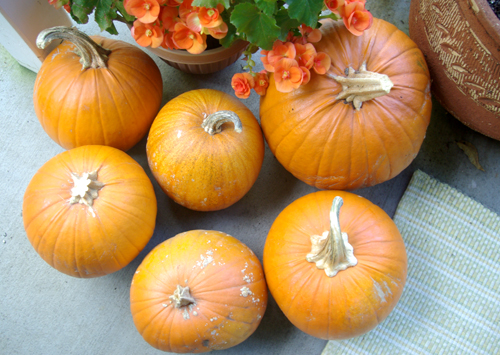
some of my new store–yes, there are more!
I hope these recent posts have inspired you to try using pumpkins in your fall and winter diet beyond simply in pies. And if you have dogs I very much hope you will try giving them pumpkin puree in their dogfood. They will love you for it!
Love and autumnal blessings,
Kathryn xoxo
Book News: I’m very happy to announce I will be hosted by the Depot Bookstore and Cafe October 25th from 1:00-3:00PM in downtown Mill Valley for an Author Meet and Greet! I would love to see you if you live in Marin or Sonoma and can make the trip down! Or perhaps you are in San Francisco and can make the short trip up! Also, check out the excerpt from Plant Whatever Brings You Joy in the November issue of Western North Carolina Woman. Blog visitors in Asheville area might be interested in knowing Malaprop’s has copies of my book! 🙂 Thank you!
Posted on October 21st, 2012 by Kathryn
Filed under: Field Trips | 2 Comments »

